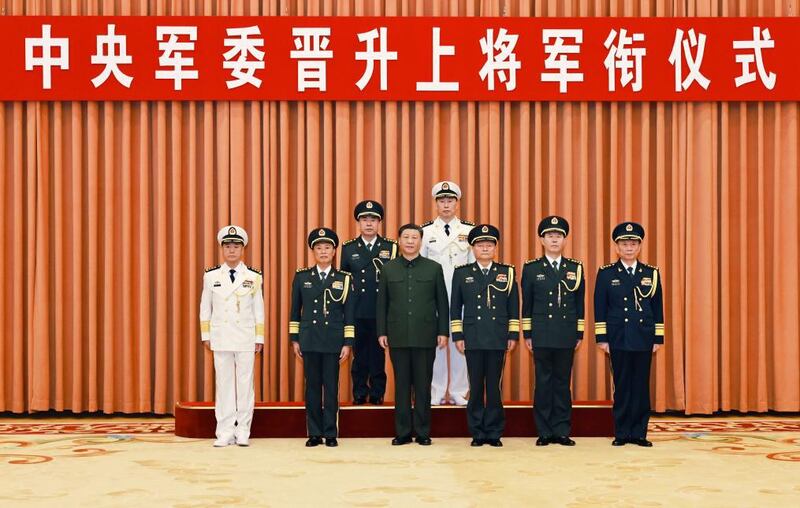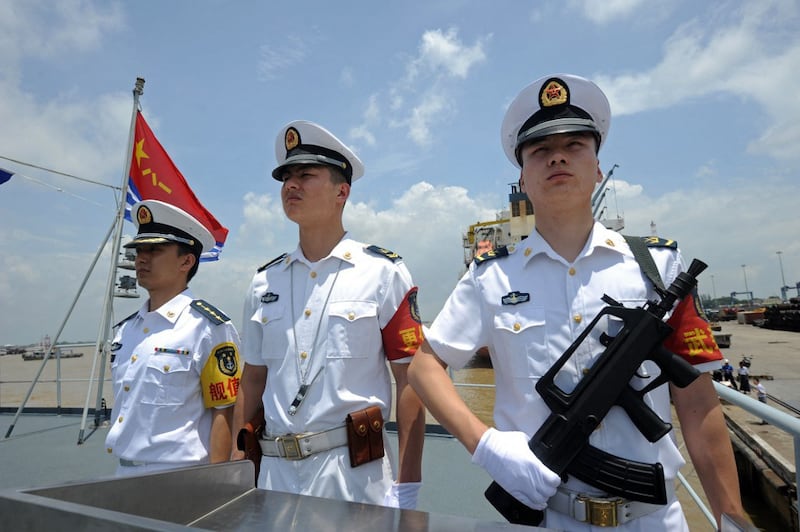Chinese leader Xi Jinping has promoted two senior officers to generals, including Hu Zhongming, who was named the top commander of the country’s navy for the first time, Xinhua News Agency said.
Xi, chairman of the Central Military Commission (CMC), "presented certificates of order to promote two military officers to the rank of general" at a ceremony on Monday, the state news agency reported.
“The promoted officers are Political Commissar of the Southern Theater Command of the People’s Liberation Army (PLA) Wang Wenquan, and Commander of the PLA Navy Hu Zhongming,” it added.
General is the highest rank for officers in active service in China. As Hu is a naval officer, his rank is now an admiral.
For his part, Wang Wenquan has become the political commander of the PLA’s Southern Theater Command. It is one of the PLA’s five major theater commands and its primary area of responsibility is the South China Sea.

The two generals' appointments "may signal greater Chinese interest in South China Sea, or at least greater internal party consensus on South China Sea as an area of priority," wrote Australian National University political scientist Wen-Ti Sung on X, formerly known as Twitter.
“The two generals are likely up for career fast-track,” Sung noted.
Hu Zhongmin’s previous positions include deputy chief of staff of the navy, deputy commander of the Northern Theatre Command, commander of the Northern Theatre’s navy, and chief of staff of the navy.
Born in Qingdao, Shandong province, in 1964, Hu joined the PLA in 1979. He is a submariner by background and captained a submarine in the past.
Hu replaced Adm. Dong Jun, who was also present at the appointment ceremony, suggesting it was an orderly transition.
Operational experience in disputed waters
"Adm. Hu's operational experience commanding both submarines and surface ships will enable him to guide PLAN efforts to improve coordination across warfare domains," said a report by the China Maritime Studies Institute (CMSI) at the U.S. Naval War College.
More importantly, “Hu has experience commanding units operating throughout the South China Sea.”
“He commanded the 2nd Submarine Base, which has nuclear-powered attack submarines (SSNs) that will have operated in the South China Sea,” said the report authored by Christopher Sharman and Andrew Erickson.
“Prior to 2010, he was a submarine Commanding Officer at the base, which means he likely operated in disputed waterspace.”

China and some other littoral states have been in disputes over their territorial claims in the South China Sea.
Tension has escalated remarkably in recent months between China and the Philippines in the waters around Scarborough Shoal and the Second Thomas Shoal, with Beijing accusing Manila of infringing upon China’s territory, and the Philippines condemning China of repeatedly violating its sovereignty.
While the main responsibilities of a commander of the navy are “to man, train, and equip the force,” Hu’s appointment “confers significant real-world experience operating in contested waters and may portend a vision to use the PLAN more aggressively in gray zone activities or even future conflict,” according to the CMSI report.
Gray zone activities are generally not explicit acts of war but can be harmful to a nation's security. In gray zone situations, China - while still using the PLA Navy as a deterrent force - has been utilizing the coast guard and its maritime militia "to manage the intensity of disputes so they do not lead to armed conflict, and to exert pressure on adversaries, thereby gradually expanding China's rights and interests," said Japan's National Institute of Defense Studies in its report published this year.
China has numerically the largest navy in the world with an overall battle force of over 370 ships and submarines, compared to the U.S.’s 293 ships and submarines. It also has the largest coast guard fleet in the world, besides a powerful maritime militia.
Edited by Taejun Kang and Elaine Chan.

